Diablo IV Review in progress: the foundations of a hellishly good time
We’ve already sunk over 50 hours into Diablo IV, and while there’s still plenty more to see and experience, what we’ve played has left us craving for more of that Blizzard secret sauce.
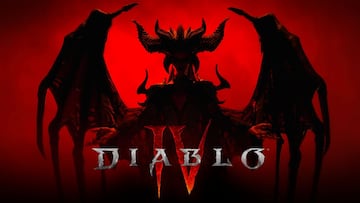
It’s been a long time since its original announcement, but Diablo IV is finally ready to launch in only a few more days. With its early access release set to start on June 1, and its full launch planned for June 6, 2023, players are eagerly awaiting for that countdown to reach zero so they can jump into the world of Sanctuary once more. Here at MeriStation, we were lucky enough to be invited to the pre-release of the game alongside other members of the press and certain individuals, which means that we were able to sink quite a few hours into the game. And of course, we’re here to tell you all about it.
However, we should get a few things out of the way first, as the version that we played is technically not the one that most people will play at launch: the pre-release version of the game was a closed, invite-only experience, which means that the servers never underwent the stress expected when the game eventually goes live.
While we had the entirety of the base game content to enjoy, some things were missing in this build: both the seasonal menus and the shop were entirely missing from the game, with the former being a large part of the gameplay experience after finishing the campaign. And of course, we can’t guarantee that the game’s balance regarding loot, experience, and other in-game features will stay as is, as Diablo IV is built as a live-service game and is at constant risk of being changed on the go by the developers.
With all of that in mind, let’s talk about what we’ve seen on Sanctuary. With a little bit over 50 hours of progress, we’ve played so much of the adventure, but as we only had a limited time with the game we weren’t able to experience everything, so there’s plenty more to uncover.
The Eternal Conflict rages on
Sanctuary is in shambles. After the events of Diablo III and its expansion, Reaper of Souls, the archangel Tyrael is believed dead and humanity is almost extinct. Demons and monsters roam the wilds, and people must succumb to their most primal instincts in order to survive. However, some still cling to their faith, now reformed under the Church of Light with the fallen angel Inarius as their living deity.
As if things weren’t bad enough, a cult has managed to free the demon Lilith, Daughter of Hatred (and literally the daughter of Mephisto) and creator of Sanctuary, from her interdimensional prison. Not one to lose time, she immediately sets on a journey across the world releasing the sins of mankind and corrupting everything she touches, with a clear but very unpredictable plan in her mind.
You play as a brave soul who after coming into contact with Lilith’s corruption, sets off in a world-trotting effort to stop this new threat. We can’t go into many more details without entering spoiler territory, but rest assured that players who are here for the dark and hardcore lore the series is known for will not be disappointed.
For fans who’ve played since Diablo II or III, there are plenty of references and tidbits connecting all of the games here. Suffice it to say that you’ll come in touch with a certain organization of sages, or at least what’s left of it, and you’ll explore the history of Sanctuary and its besiegers in depth while traversing the land.
Should’ve made a right at Tristram
And traverse the land you will. This time Blizzard chose to go for an open-world design for the game and its main story, and what they’ve managed to do is frankly awe-inspiring: from the moment you gain control of your character and complete the intro, the world is yours to explore in full and we mean it. You may choose to complete each of the first three Acts of the main story in order, slowly making your way through the different regions as you follow each step of the quests you’re given, and eventually, you’ll find yourself with new allies and sets of characters, chasing the villains and revealing massive plots.
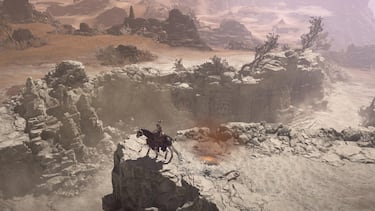
Or, as we tried to do during our time, you can simply decide to go to an entirely different area to complete Act II, or Act II on the other side of the world. It will require a bit of grinding, as every area has a minimum level which means that weaker characters simply will not survive if they try to pick a fight there, but that’s not such a difficult task. The entire world map is dotted with points of interest like dungeons, cellars, towns with sidequests and leads, and strongholds to conquer. All of these reward you with experience to level up quickly, and point you in the direction of monsters to slay for even more exp and, of course, loot.
No matter which direction you decide to go, you’ll never be without options for caves to explore or challenges to be had, especially since once you reach a region’s level, it’ll start to scale with you. After a while, you’ll see that every section of the map stays at your current level, with monsters getting significantly stronger so you always have a challenge no matter when you choose to tackle an area. If you want to have an advantage then you’ll have to look into building a strong hero not only with your skill trees, but also with the gear you wear and upgrade.
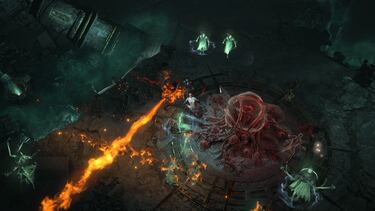
Each of the 5 classes available to play as at launch (Barbarian, Rogue, Sorcerer, Druid, and Necromancer) comes chock full of unique abilities from which to choose when leveling up. Mostly all of them can be upgraded multiple times, and they all have specializations that change the way they work. From level 1 to 50 you’ll see yourself experimenting with all of them to see which combinations suit your playstyle, and eventually you might want to delve into build crafting and finding “the meta”.
You can rest assured that there’s a deceptive amount of depth here for you to spend countless hours making small changes. However, if you wish to stick to a single ability selection, you can: all of the options here are viable in the earlier part of the game, meaning before the endgame, but we’ll go into that further ahead.
If you’ve seen the material that Blizzard themselves have been releasing in the path to launch, you might have taken a peek at the world map. It’s easy to disregard studio claims about how their map is the largest ever, with the most stuff and the highest amount of virtual square miles to walk through. But trust us when we say that in our entire time with the game we haven’t been able to discover everything on the map. Every corner of the world is filled with quests, or dungeons to complete in order to unlock Aspects that help make your character stronger. It’s all handcrafted and unique too, with smaller stories spread throughout that show how bad things can get for the people of Sanctuary.
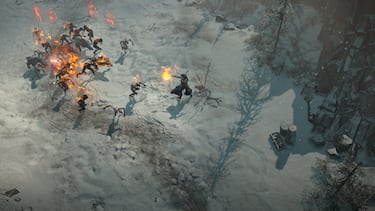
The end is never the end is never the end is never the…
Maybe you’ll be able to finish the main story in around 60 to 70 hours if you’re stopping here and there. Maybe, if you rush to the finish line and don’t complete any side content, you’ll be able to complete the campaign in even less time. However it happens, once you do you’ll come face to face with the real focus of the game: the Endgame.
Once you finish the story and complete some prerequisites, you’ll be able to unlock World Tier III, which makes enemies much harder and more aggressive, but it also allows for new tiers of items to drop as loot. Alongside that, you unlock the ability to level up an additional, separate skill tree of Paragon levels, which allow you to become even more powerful. This in turn unlocks the Glyph system, which lets you imbue special abilities into your character, as well as letting you unlock even more paragon skill tree. It’s all about power creep and progression from there on out.
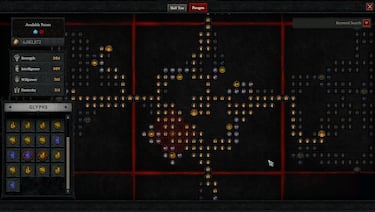
As if that wasn’t enough, new monsters and variants like Champions start to appear around the world. These drop even better upgrade items like rune words, and Sigils begin to drop which allow you to activate Nightmare Dungeons: modified versions of the dungeons around the world that are sadistic in their difficulty, but which give incredible loot and experience.
And then of course, World Tier III and beyond starts littering the world of Sanctuary with Fields of Hatred, which are areas of the game where you must fight against powerful enemies to purify crystals that can be used to get even more powerful gear and items. But apart from fighting demons, you’ll also be facing off against every other player that enters the area in PvP fights. Suddenly you have to start looking into different builds and gear loadouts so you can handle every other class, looking into your own weaknesses and strengths to come out of a skirmish victorious and with your bounty in hand.
Reading all of this you can start to see the bigger picture: Blizzard has put a ton of focus on the expanded experience after the main campaign is over. While the story is a huge part of the game, Diablo IV is built so players keep coming back to grind and build their characters ever more powerful. The devs have mentioned that reaching the absolute max level (100 at World Tier IV) could take hundreds of hours per character, and most of the people coming back will have this as their main goals. And besides that? Well, there’s the big piece of the puzzle that was missing from the version of the game we played: seasonal content.
Hanging off the cliffs of Hell
What we’ve played of Diablo IV has certainly left us craving more. It’s that Blizzard formula that has worked so well in the past, and that many of us fans of the series know well. The game is all about grinding more power, getting stronger, and showing off to your friends and enemies alike. And all of that is accomplished in the base game.
However, with what little time we had to play the game, we must admit that we missed out on a fair amount of content. Not only did we miss out on the higher World Tiers and most of the Endgame content, but since the Seasons and the Shop were not active, we can’t in good faith give a final score to Diablo IV.
It’s undeniable that what we’ve played so far are the strong foundations of a much larger experience, one that we’ll be experiencing alongside the rest of the world once the game launches. But we can’t speak for what you may experience when you rush in alongside millions of other players.
We’re not only talking about server instability or connection problems, or even the now dreaded login queues, but we also don’t know if the balance of the game will remain the same. It might be that loot is much less generous than what we got, or that eventually the shop and seasons change to give an advantage to those who choose to pay real money for improvements. Of course, Blizzard has repeatedly stated that they won’t do that and that all microtransactions will be entirely cosmetic. But similar statements were made about Diablo Immortal and that ended up being an extremely predatory piece of software in the end.
Related stories
We can only hope that Diablo IV and the dev team behind it stick to what they’ve worked so hard to achieve during these past few years: a genuinely fun game that evolves the Diablo formula players love, with an expansive world shared with hordes of other players. We’ll keep playing to figure out if it all lives up to its promises after the rest of the content makes its way to the game.
Diablo IV will release on June 6 for PC, PlayStation 5, PlayStation 4, Xbox Series X|S, and Xbox One.

